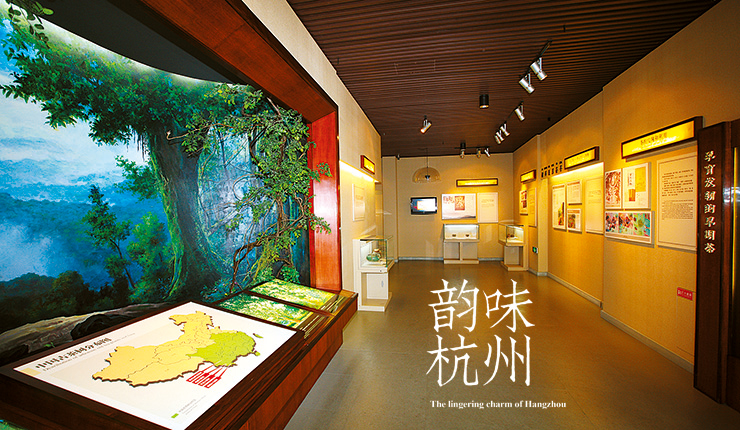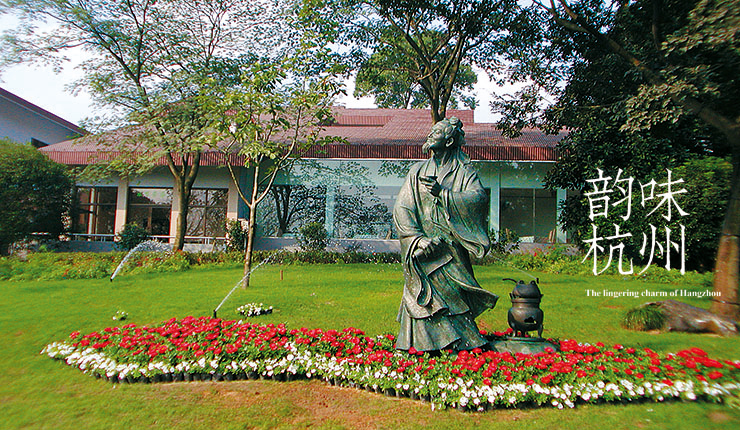
The China National Tea Museum, the only national-level museum in China dedicated to tea and tea culture, has two zones: Shuangfeng and Longjing. The Shuangfeng zone offers six exhibition spaces including the history of tea as well as to tea varieties, tea activities, tea-people relationships, tea utensils, and tea customs, while the Longjing zone is the only space in China to display tea garden ecological protection, tea culture and visitors’ interactive experiences.
The ultimate West Lake pairing is Longjing tea and Hupao Spring water.
Longjing (Dragon Well) tea is a renowned Chinese green tea and is ranked first among China’s top ten teas. It is named after the Longjing Village by West Lake and has a 1,200-year history. Longjing tea has four major characteristics: green in color, fragrant, sweet, and well-shaped.
Hupao Spring (Tiger-dug Spring) lies near the Huichan Buddhist Temple (commonly known as Hupao Temple) southwest of Hangzhou, about five kilometers from the city center. The spring’s water is rich in minerals and has a sweet, mellow taste. The minerals add surface tension; if coins are placed carefully one by one into a cup filled with the water, the coins float rather than sink.

China National Tea Museum is the only national level special museum themed on tea and tea culture in China. There are two pavilions at present: Shuangfeng Pavilion and Longjing Pavilion. Shuangfeng Pavilion, opened to the public in April 1991, is located at No 88, Longjing Road with an area of 4.7 hectares. Longjing Pavilion, opened to the public in May 2015, is located at No. 268, Wengjiashan with an area of 7.7 hectares. Both pavilions integrate multiple functions including culture presentation, popular science propaganda, scientific research, academic exchange, tea art training, interactive experience, tea tasting, catering and conference holding. China National Tea Museum is not only an exhibition and exchange center of Chinese and global tea culture, but a complex of tea-themed tourism.
(Source: Official Website of China National Tea Museum)

